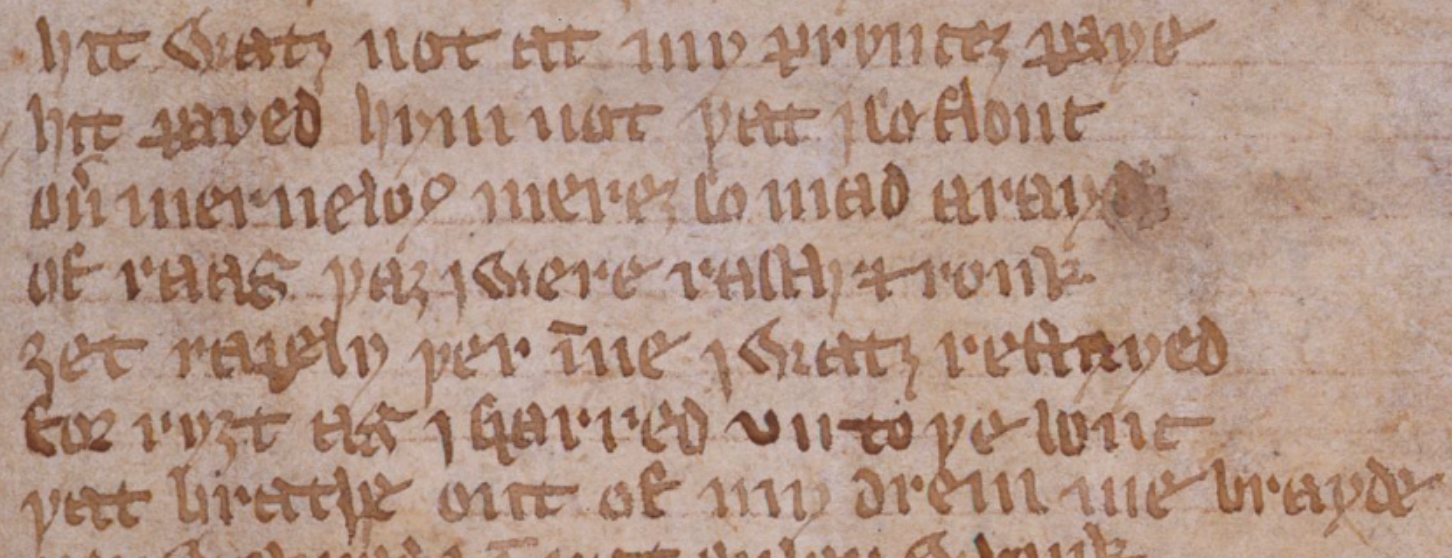
I don’t normally find myself writing about Thom Gunn’s poetry. But I like Gunn, and while reading The Man with Night Sweats earlier this year I stumbled on a passage in ‘Lament’ which sounded insistently like the end of Pearl.
Could this be an allusion, or was my mind merely seeing Pearl everywhere? I tweeted, and friends agreed that there might be a there there. Looking more closely, I realised that ‘Lament’ displays some formal resemblances to Pearl too. It was time to write a note.
I could make a strong case that Gunn would have known Pearl, it turned out. I had the pleasure of picking through the various autobiographical fragments that Gunn himself published and through what is known of his supervisor during his undergraduate studies at Trinity College, Cambridge, Helena Mennie Shire. Gunn wrote of reading and liking Sir Gawain and the Green Knight, and it’s hard to believe that that poem’s codicological companions would have escaped a student conscientous enough to read all of Shakespeare, and keen enough to examine Piers Plowman in manuscript.
Pearl is hardly the only model for ‘Lament’. Stefan Hawlin has convincingly traced the design of ‘Lament’ to Ben Jonson’s elegy on Lady Jane Pawlett, and in the notes to ‘Lament’ in the recent Faber Selected Poems Clive Wilmer points out a specific experience which offered material for the poem and which remains recorded in one of Gunn’s notebooks. My note only adds another layer to that story—but it does add another layer.
This note also offers a small parable about the mixed blessings of life lived digitally. Over the years, Twitter has largely failed to fulfil the radical potential some once saw in it, but this note’s gestation shows Twitter’s positive side as a clearing-house for ideas.
On the other hand, technology did let the article down in its last step: OUP, who publish Notes and Queries, appear to have mechanically pumped the typeset version through a conversion process to produce the web version, and since N&Q uses small caps article titles, the article title has come out online with completely messed-up capitalisation. Heigh-ho.
Still, I’m chuffed that this is now in print, and that I got the chance to publish on the ties between two poems, one somewhat younger than the other, that I quite like.
As always, anyone who doesn’t have access to this article is encouraged to get in touch with me: I’m always happy to provide copies of publications!
Comments